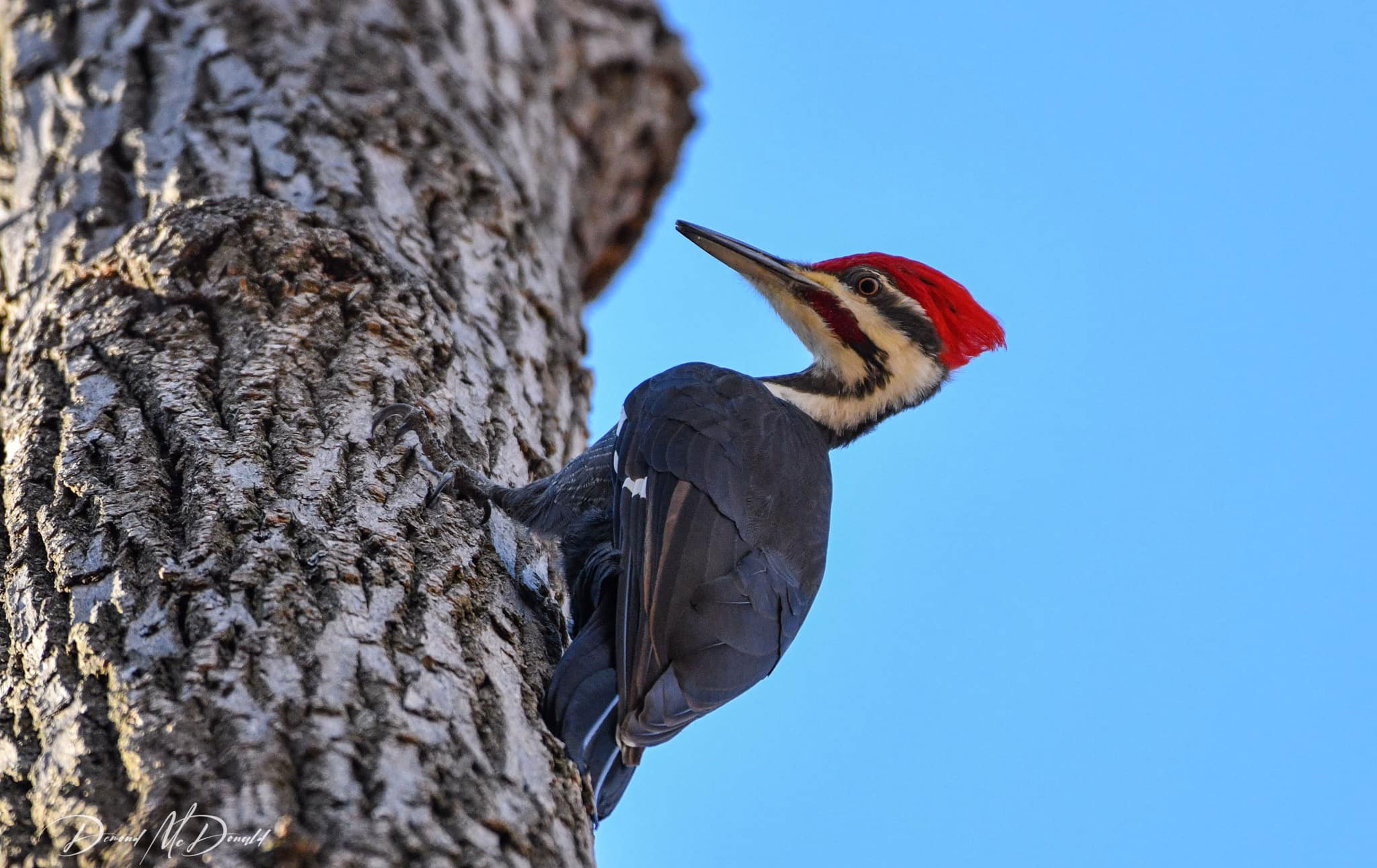Running Into Woodpeckers in Florida Species: Habitats and Habits
Wiki Article
Woodpeckers Unleashed: Discovering the Wonders of These Competent Tree Mountain Climbers
Woodpeckers, with their unique markings and rhythmic drumming echoing with wooded locations, hold a distinct location in the avian globe - Woodpeckers in Florida. As we dive right into the intricate details of woodpeckers' nesting habits, feeding techniques, and the continuous preservation initiatives to safeguard these exceptional birds, a much deeper gratitude for their location in nature unfolds.Makeup and Adaptations
When taking a look at the composition and adaptations of woodpeckers, one can observe remarkable features that allow these birds to flourish in their specialized ecological particular niche. In addition, woodpeckers have zygodactyl feet, with two toes facing ahead and 2 facing backward, giving a company hold on tree trunks while they browse for food or drum for interaction.Furthermore, woodpeckers have a distinct tongue framework that is long, barbed, and sticky, enabling them to extract pests from crevices in timber. This customized adaptation enables woodpeckers to exploit a food source that is hard to reach to many other bird types. Overall, the makeup and adjustments of woodpeckers showcase the remarkable evolutionary solutions that have actually allowed these birds to grow in their arboreal habitat.
Drumming Behavior
Having actually discovered the makeup and adjustments of woodpeckers, the emphasis now changes to recognizing their drumming behavior, a distinctive aspect of their interaction and territorial displays. Drumming is an essential form of interaction among woodpeckers, serving several functions such as developing territories, bring in friends, and signaling alarm. Each woodpecker varieties has a special drumming pattern that aids people acknowledge participants of their very own types and identify them from competitors or killers.Woodpeckers generate drumming sounds by swiftly pecking on powerful surface areas such as dead trees, utility posts, or even steel things, creating a collection of balanced beats. The intensity and speed of drumming can vary based upon the objective; for example, a quick drumming sequence might represent aggressiveness in the direction of trespassers, while a slower and softer drumming pattern can indicate courtship (Woodpeckers in Florida). In addition, woodpeckers might adjust the frequency and duration of their drumming to communicate particular messages properly
Nesting Habits
Discovering the nesting practices of woodpeckers reveals remarkable understandings into their reproductive behaviors and environment options. Woodpeckers are known for their special nesting choices, frequently digging deep into tooth cavities in trees to produce protected rooms for raising their young. These tooth cavities serve not only as a nesting site yet additionally as a protected haven from killers and inclement weather condition.Woodpeckers show a high level of fidelity to their nesting websites, often returning to the same location time after time. This actions highlights the relevance of appropriate environment schedule for their reproductive success. The choice of a nesting website is important for woodpeckers, with factors such as tree species, elevation, and decay stage playing considerable roles in their decision-making process.
Surprisingly, some woodpecker types are known to excavate several tooth cavities within their region, giving themselves with alternate nesting choices. This approach may function as a form of insurance policy against prospective dangers or disturbances to their main nesting website.

Feeding Techniques
Woodpeckers use a range of specialized feeding techniques to procure their main food resources. One of the most unique feeding habits of woodpeckers is drumming, which involves quick pecking on trees to uncover bugs beneath the bark. This drumming not only aids them locate victim however additionally functions as a way of interaction with other woodpeckers. Woodpeckers have strong, chisel-like beaks that enable them to drill into wood easily. As soon as an opening is created, they utilize their lengthy, barbed tongues to remove insects such as ants, beetles, larvae, and spiders. These tongues are click now coated with sticky saliva that helps catch the prey. Woodpeckers are also known to dig deep into cavities in trees to gain access to concealed insect larvae or sap. Some varieties, like the acorn woodpecker, shop nuts in specifically created holes called granaries. This critical saving of food helps them endure during food deficiency durations. Woodpeckers are absolutely exceptional in their feeding strategies, showcasing flexibility and intelligence in obtaining their nourishment.Preservation Efforts
Amidst the elaborate feeding methods displayed by woodpeckers, the conservation initiatives intended at safeguarding these interesting birds play an essential function in preserving their environments and populations. Woodpeckers face different risks to their survival, including habitat loss as a result of deforestation, climate adjustment altering their ecological communities, and collisions with man-made structures such as buildings and lorries - Woodpeckers in Florida. Conservationists are proactively functioning to deal with these challenges and make sure the lasting health of woodpecker species)
Education and learning and public recognition projects are also vital elements of woodpecker preservation initiatives. click this By raising awareness regarding the value of these birds in keeping healthy woodland ecological communities, conservationists can garner support for habitat preservation campaigns and advertise responsible land monitoring methods. Via collective initiatives between scientists, policymakers, and neighborhood neighborhoods, we can collaborate to safeguard a future where woodpeckers grow in their all-natural habitats.
Conclusion

Report this wiki page